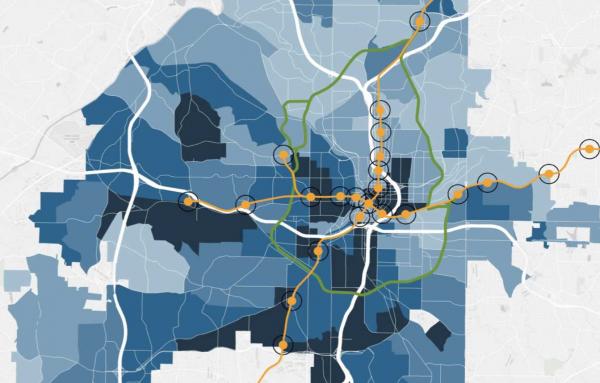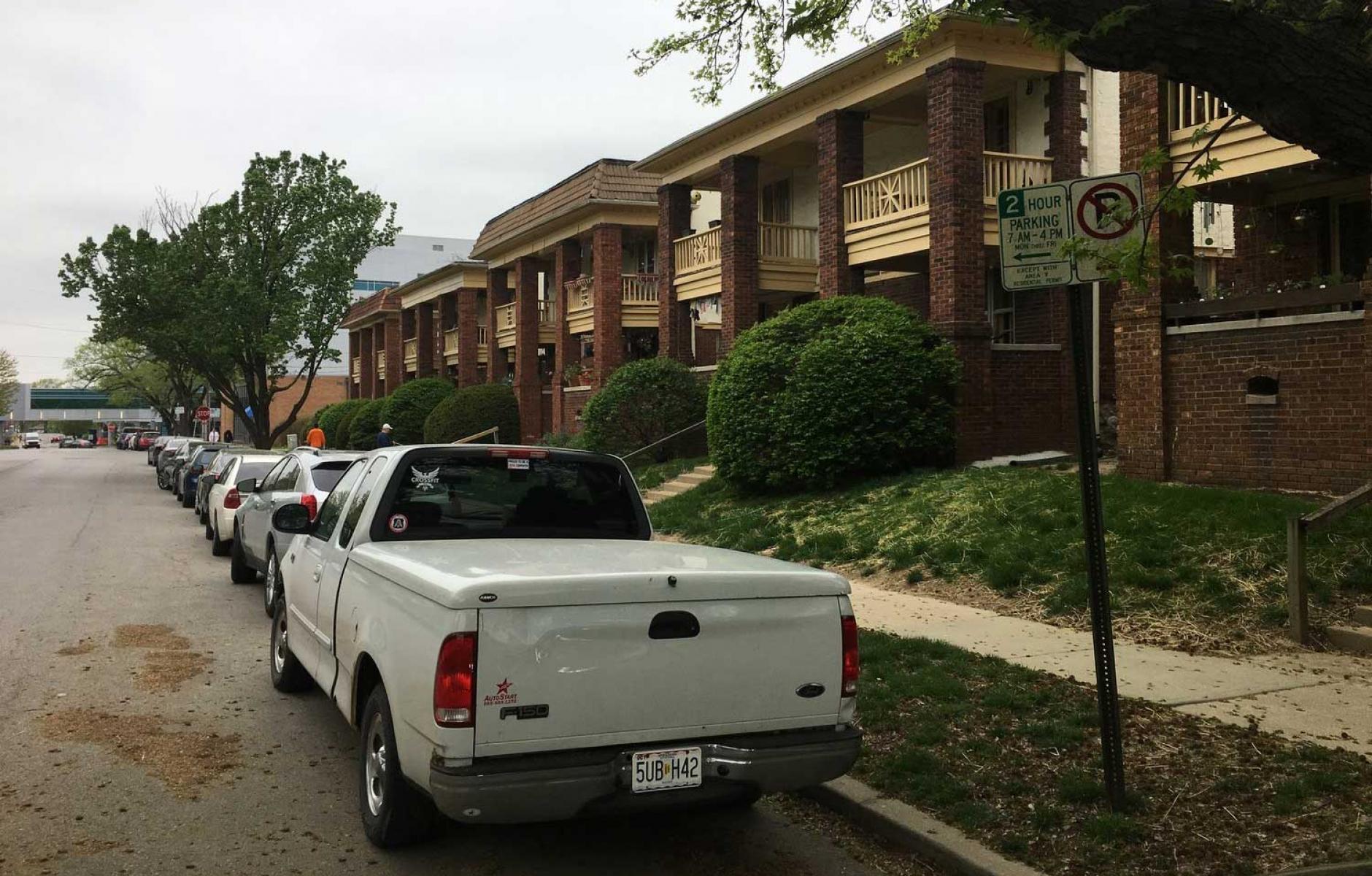
Parking is important and not important
Who doesn’t want to talk about parking? Is there a topic that comes up more frequently, among both laypeople and planning/development professionals?
I’ll always remember a “painfully funny because it’s true,” tweet in 2016 that essentially said, “The presidential debates erred by not asking a question about parking, which is clearly the #1 issue most on the minds of Americans.”
Parking is almost always emotional, confusing and a flash point. It’s also possibly the single most important topic that any of us will deal with professionally or as advocates, and critical to understand if we want our cities to urbanize successfully.
I hope to clear up some confusion with this post, and give some guidance especially to professionals in planning and economic development. I’ve written and read dozens and dozens of posts about parking, as have many of you, so I aim to distill my current thinking to be helpful.
In a nutshell, I’d offer two key points that may seem contradictory at first blush.
1. Regulating off-street parking truly is counter-productive. We would be wise to work toward complete elimination of minimum off-street parking requirements in walkable, urban neighborhoods.
2. The need for parking, though, does not magically disappear. We would also be wise to plan for smart parking solutions, so our cities can incrementally urbanize.
Background
It’s been heartening the last 10 or 15 years to see more understanding of the issue of parking, and some tangible change in many cities. Places as different as Buffalo, Minneapolis, Atlanta and Miami have all made major strides in removing unhelpful parking requirements. More leaders are beginning to recognize the real tradeoffs that happen when off-street parking is required for any development.
But there’s still a lot of confusion around the issue. That confusion is made more difficult because urbanists tend to talk about the 6 or 8 big transit metros a great deal, and the rest of America is still largely driving everywhere for everything. We need a little nuance, especially since unlocking parking from development is a key priority for allowing places to urbanize more successfully, more equitably and more authentically.
The first point I noted above is requiring off-street parking is counter-productive for virtually every city’s goals. Period. It’s a statement of values that says: parking for cars is more important than housing for humans, the economic success of our city, public space, access to economic opportunity for all or climate change. People who advocate for off-street parking requirements are saying, “My personal convenience trumps other issues, or the greater good.” Provision of parking requires land—whether at-grade, above or below—and that land comes at a cost. It means the same land can’t be used for any other human uses, from housing to shops to outdoor space.
This is setting aside the practical, real-world issue that it’s impossible for any of us to truly guess what the demand is for parking, any more than the demand for avocados. It’s dynamic, especially today with an increasing array of mobility options. We need to move beyond these requirements for anywhere that is walkable or trying to be walkable, and it’s exciting to see so many people working in this direction.
But … (and there’s always a but)
But this is not to say there’s no demand for parking or for accommodating parking. It also doesn’t mean that redevelopment will just magically happen if there are no parking rules. That’s not true, either. It’s still important to plan for parking. I’d argue, it’s especially important to enable the kind of messy urbanism I’m often describing on this site. I wish it weren’t the case, but it is. This is how nuance works versus rigid ideology. When ideas or theories meet the real world, you can either a) dig an ideological hole and appear to be virtuous, or b) try to solve actual problems of actual human beings and places.
Part of the reality of American cities is that we are very, very car-dependent. Most of you know this. It’s been written about ad nauseam. But in our current excitement for urbanism, we tend to want to wish that away. I certainly wish it weren’t true. But I’m faced with reality every day, and so are most of you. We can and should continue to strive to make our walkable places more walkable, and to have first-class options for getting around: biking, transit, Transportation Network Companies, and scooters. But the other side of the coin is, most of our built environment is designed around cars, and a huge amount of the public is going to drive to your walkable neighborhood. If we ignore that and don’t plan for it we will limit the opportunity for urban places to be successful in 2019, and to attract more residents. If we over-regulate or plan poorly, we run the risk of super-charging affordability problems and creating economic fragility by only making large projects viable.
There’s a delicate balance, of which we need to be mindful.
As one example, here’s how we suggested handling neighborhood change in the Downtown Savannah 2033 Plan. The key proposals were:
- Eliminate or change regulations that don’t allow for the historic pattern to be built today.
- Continue to manage curb parking according to Donald Shoup’s typical suggestions
- Plan for new, shared parking structures in emerging growth areas
- Tie those structures to other mobility options: free transit shuttles and better biking
- Continue to manage the garages as shared, publicly owned and operated facilities
- Design them so that the garages can be easily “pulled out” if parking demand craters in the future, or when they’ve past their useful life.
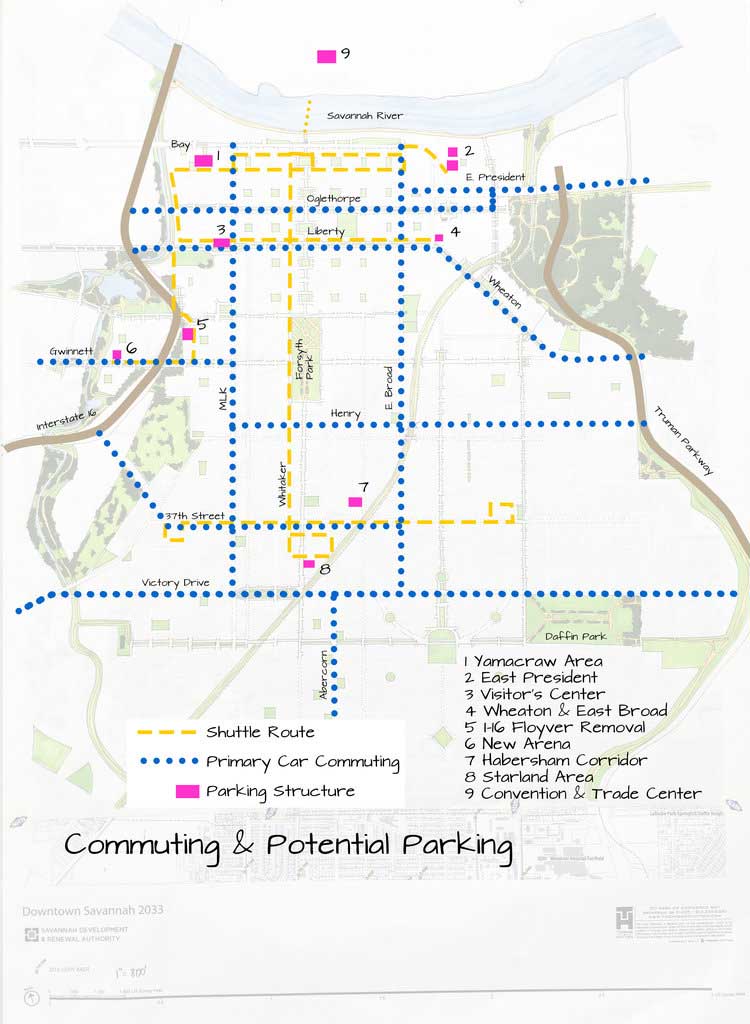
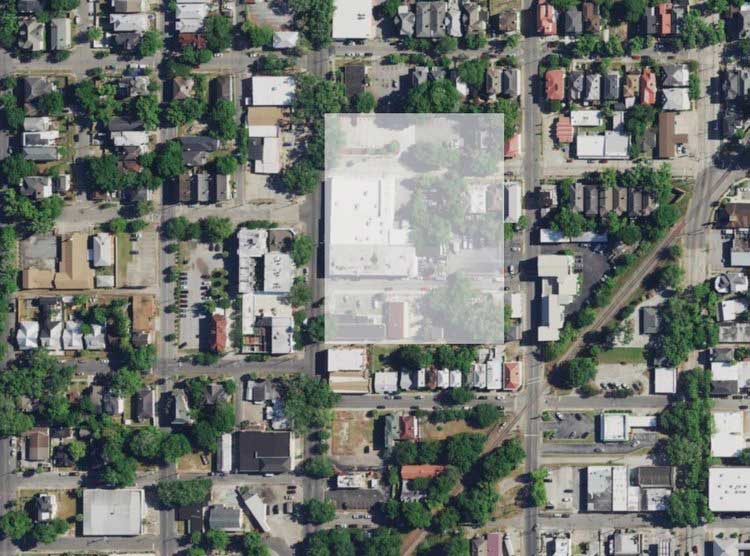
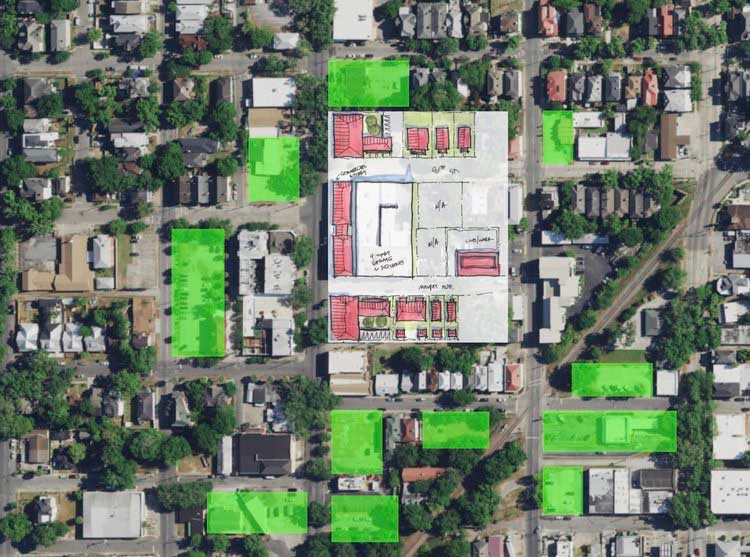
The good thing about the Savannah example is the City has been utilizing a similar parking-management strategy for a couple of decades. It’s not a crazy, new idea. It’s how much of the historic downtown has been able to accommodate parking needs, while also accommodating new growth and development. The City built several garages, and leases space to private developments. The parking fund is an enterprise fund, and spins off a profit. Some of that profit is used to fund a free circulator shuttle. So the City already has an effective foundation for moving forward.
Your city might not—many don’t. But it’s not difficult to implement, and there are numerous good examples to model. This is a far better place to begin than trying to solve parking and urban design issues on a project-by-project basis.
How does this help “messy’ cities and Missing Middle buildings?
At the scale of most missing middle housing and residential construction, parking is largely irrelevant. If alleys or lanes are present, there’s an ability to handle some off-street parking quite easily. The rest can be accommodated on the street. If there’s no alley, often it’s still possible to swing a drive around to the back and have a modest amount of off-street parking.

Even without any off-street parking, the demand is so low that it’s simply a non-factor for most residential development. Yes, middle-class tenants and owners will likely own cars. But street parking can absorb a great deal of parking demand. There’s definitely amenity value in having garages and off-street spaces, but it’s still highly probable to make the numbers work without it. We typically over-estimate the importance of off-street parking as an amenity for many renters and urban homeowners. It’s nice to have, but often not critical. With improving neighborhoods and more transportation options, it’s getting less and less important over time.
So that is all to say—it’s not necessary for a local government to require off-street parking for urban residential. In fact, it’s counter-productive to require it. The market will sort out what is needed and what isn’t. Just make sure any parking that is provided is not provided in value-destroying front-loaded garages.
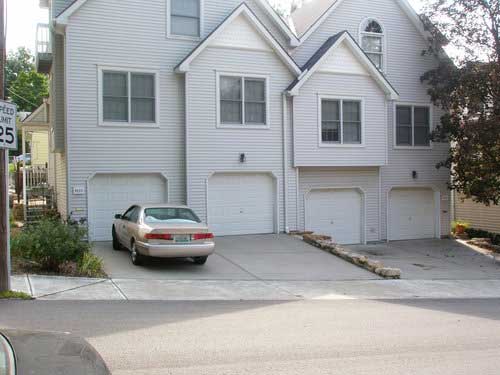
Where we start to see issues that need some planning and foresight are in places that are above the density scale of small apartment buildings, and in walkable commercial corridors. If your neighborhood is predominantly composed of apartment buildings, (typically over 10,000 people per square mile) you’re likely going to need a shared, off-street solution. That is, unless you’re already well-served by frequent public transit and other options. In that case, this might not matter. But in most of the country, my experience is that condition is rare.
On many commercial corridors, the numbers simply don’t work if you have to provide parking for new or existing buildings. Even a very low requirement can kill a deal quickly. But parking is still needed—people do have cars, and will for quite some time. Don’t get over-excited by the AV hype.
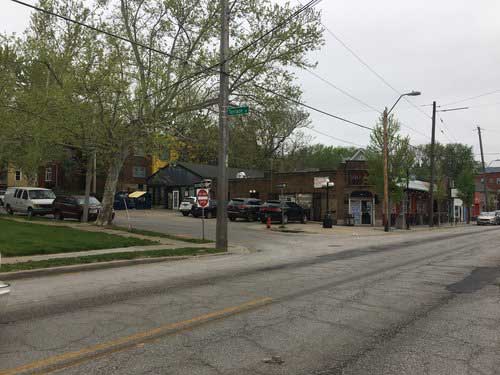
To put this into practical terms, let’s look at doing a new building in a walkable corridor. If I want to build a small mixed-use building on the 40-foot by 100-foot lot shown above, my tenants still need parking. Whether they are office or residential tenants, they are almost certainly going to have cars and need parking. Even retail tenants are likely to need some customer and employee parking. I repeat: I wish it weren’t the case, but in order to get rents that support new construction or significant renovation, this is the reality in most of America.
One solution? Plan for district parking that can be leased by small developers and properties. Having a nearby structure that allows the option of leasing market-rate spaces turns a project from unlikely to potentially viable. It responds to a real-world need, but not by imposing a requirement on all manner of projects that simply can’t fulfill it. And in this particular case, there’s a large parcel one block away that could be very attractively planned and designed for such a shared facility.
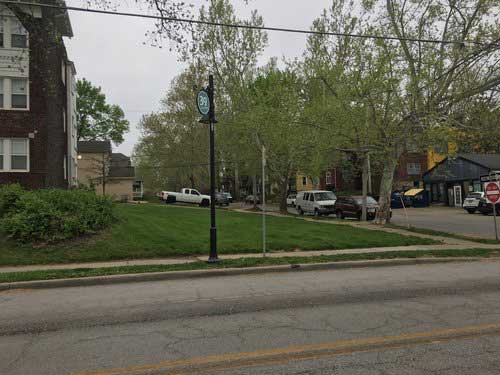
My hypothetical 3-story mixed use building on a small lot is what most planners and urban advocates say we want. It’s locally-owned. It’s urban and walkable. It’s more affordable than the big project down the street. It provides more customers to a walkable area, which ultimately makes other mobility options more viable.
But I can’t get the rents I need if there’s no parking solution. Most of the tenants are still going to have cars. Street parking isn’t the right solution for them in more commercial or mixed-use areas. That space is best reserved for turnover and proper curb management. Being able to offer leased spaces close-by is ideal. It uncouples the parking, making it a choice. But, the choice is a good choice, and safe and desirable as an amenity. For those who actually can rely on transit, biking, etc, they don’t have to pay. But in truth, that’ll be a small percentage for now and for a while in most places in the US. I hope it changes, and believe it will change, but it’s reality today. Let’s accept and work with reality, in order to nudge our communities into a better future.
A parking minimum requirement in this situation is unproductive and prevents improvements. The requirements can never be met on-site, so the most common result is no new development, or a developer assembling multiple lots into one very large project. In a few super-hot markets, people may persist anyway at the small scale. Their path is often a tortured lease arrangement for a remote lot, and constantly managing tenants that fight for limited parking. The rules are bent because they are arbitrary. Residents and business owners alike get frustrated. Progress often stalls, or only happens for very upscale owners that can afford a confusing process.
Cities and their partners can help this real-world issue with some smart, targeted solutions. Eliminate unproductive requirements, but plan for shared, well-managed assets.
Yes, many neighbors will oppose change to loosen or eliminate parking. But we all need to be prepared to explain the tradeoffs. Accommodating the interest for hassle-free parking means less affordability, less sustainability, less customers for local shops and services, and ultimately less choice for residents. I’m not saying this is true of every neighborhood everywhere—but it’s definitely true of basically every American urban neighborhood that existed prior to the Great Depression.
The reality of most American cities and places is the vast majority of people drive from a distance, and need parking. Let’s be welcoming, but smart. Don’t ever, ever prioritize speed of traffic for the cars, but welcome them into slow-speed environments with easily-located parking. Price curb parking for demand, as Donald Shoup advises. Plan to be able to “unplug” garages if demand craters 20 or 30 years from now. That recovered land can be opened up for public space or more development. But let’s not stick our heads in the sand, since doing so will not help in our desire for more incremental improvement and more successful urban neighborhoods.
This article was published on Kevin Klinkenberg's blog, The Messy City.





